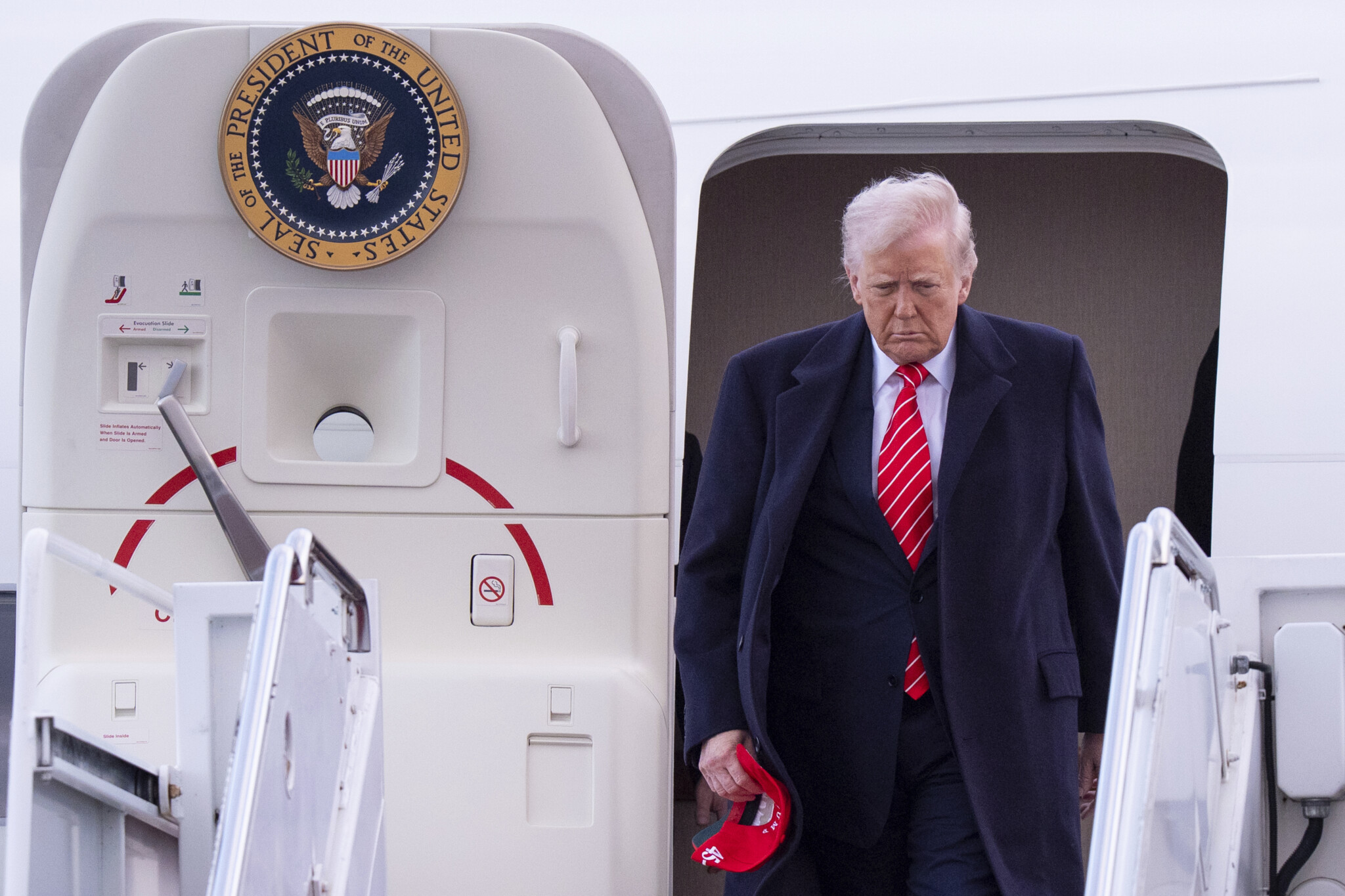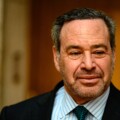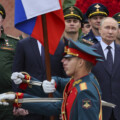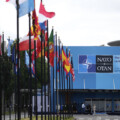Author and former security correspondent for The Sunday Times Richard Kerbaj traces the untold history of the Five Eyes, the world’s most powerful intelligence sharing group, from its early beginnings fighting Nazis, to taking on the Soviet Union, to defeating terrorists in the Middle East. He also addresses Canada’s contributions and claims that the Trump administration plans to boot us out of the organization. His latest book is The Secret History of the Five Eyes: The Untold Story of the International Spy Network.
The following is an excerpt from The Secret History of the Five Eyes by Richard Kerbaj.
Richard Walton prided himself on being a detective, especially after his takeover of SO15, the counterterrorism command at Britain’s largest law-enforcement organisation, Scotland Yard. His entry into the high-profile role in 2011 made him publicly accountable for the actions and inactions, successes and failures of around 2,500 officers who had been on the frontline of investigating terrorist and espionage attacks against Britain, including the Al Qaeda-inspired London bombings in 2005 and the murder of Russian dissident Alexander Litvinenko a year later. Public accountability was not merely a concept for Commander Walton – it was a reality.
He could not hide behind the veil of secrecy that legally forbids the identification of intelligence officers below the highest rank at Britain’s spy agencies, including MI5 and MI6, because he was not one of them. Nonetheless, he respected the work of spooks and had become accustomed to meeting with Five Eyes intelligence officials across a range of areas – from social functions hosted by their embassies, to discussions around mutual targets and threats. ‘The vast majority of terrorist investigations have an international dimension that requires cooperation between police and intelligence organisations globally,’ Walton said. ‘Intelligence agencies created across the Five Eyes have no executive powers of arrest so police powers have often been called upon to assist with making arrests of foreign spies and in more recent times, the arrest of terrorists.’On operational matters, most of Walton’s interactions with intelligence officers from the alliance had been also attended by representatives from the UK’s spy agencies, predominantly MI5. Which is why it seemed rather odd that officials from the Canadian Security Intelligence Service had organised to meet with him on short notice in the spring of 2015 to discuss an operational matter without inviting anyone from Britain’s security services. On greeting the two CSIS officers at Scotland Yard’s headquarters in central London, Walton sensed that they seemed uneasy, as if weighed down by the gravity of some contrition. Even their smiles appeared forced as they sat down with him and some of his staff members to discuss a case relating to a man whom the Canadians had recruited to infiltrate Islamic State in Syria.
At that point in early March 2015, it was an enormous coup for any of the Five Eyes to have some on-the-ground visibility of the terrorist organization’s activities, let alone to have successfully penetrated its ranks. In conventional wars, such as the invasions of Afghanistan and Iraq, intelligence agencies, including the CIA and MI6, had been able to sneak into the countries under the cover of military protection to conduct recruitment operations on the ground, turning well-positioned militants and local government officials into spies. That was not possible in Syria, because in the summer of 2013, the British parliament had voted down a proposed military intervention against the regime’s use of chemical weapons. Although Washington subsequently approved military action that same year against Damascus, the use of combat troops had been forbidden. A year later, when ISIS declared the creation of its Islamic state, neither Britain nor the US had any military footprint on the ground in Syria and were often forced to rely on aerial assets, including drones and spy planes, to assess the threat emerging from the country.
ISIS became paranoid about being watched and made infiltration of its ranks virtually impossible after shooting or beheading many people it had suspected of spying for the West, creating cautionary tales of such murders by releasing videos of them online. The gruesome videos had become part of its propaganda campaigns, largely driven by some of thehundreds of jihadists who had left Britain to join ISIS fighters on the battlefields of Syria and Iraq, before urging other Westerners, including those from Canada, to join their cause. During the meeting with Walton, the two CSIS officers were aware that more young men and women from the UK had continued to slip the radars of Scotland Yard and MI5 in pursuit of their extremist ambitions in the Middle East region. The Canadian intelligence officials understood the sensitivities, the political backlash, and the public relations disaster that such investigative setbacks had generated for their British colleagues. Walton and his team had also borne the brunt of hostile media commentary relating to their inability to stop three schoolgirls, aged between 15 and 16, who had been suspected of fleeing the country for Syria in the winter of 2015. The three teenagers from east London– Shamima Begum, Amira Abase and Kadiza Sultana – had become part of a new, and rapidly growing phenomenon of young women being drawn to the battlefield not for combat, but rather as potential spouses for jihadists. While an estimated 4000 male Western foreign fighters had joined Isis at that point, more than 500 women and girls had travelled to Syria, drawn by what they wrongly perceived would be an ideological awakening and an answer for their identity crisis.
Sir Kim Darroch, Britain’s National Security Adviser at the time, said that ‘Isis were pretty effective at online recruiting – targeting isolated or troubled youths in British cities as potential recruits.’ He said the creation of the so-called caliphate by the terrorist organisation had been transformational in elevating the status of Isis in the eye of its potential recruits.‘It meant it wasn’t just another obscure terrorist organisation, operating out of who knew where,’ he said. ‘It had created a base – actual land for people to travel to and live in. And that was absolutely critical for ISIS’s appeal to this generation of young people.’The reported escape of the three school pupils had generated global headlines and an emotional public appeal by members of their families, urging them to return home. Their disappearance had caught theirfamilies by surprise, and it was yet another wake-up call for Scotland Yard. What was not publicly known until they went missing was that the teenagers had been interviewed by Walton’s detectives in December of the previous year after one of their school friends had fled to Syria earlier that month. Nothing had indicated to the detectives, however, that the three teenagers had been at risk of doing the same.
Yet, on the morning of 17 February 2015, the schoolgirls left their family homes and boarded a flight to Istanbul from London’s Gatwick Airport. Walton appeared at a press conference three days later, saying that while their intended final destination was likely to be Syria, their exact whereabouts remained unknown. The counterterrorism chief also informed the media that Scotland Yard had launched an unprecedented international search for the schoolgirls and that his department had been liaising with Turkish authorities to try to locate them. ‘We are extremelyconcerned for the safety of these young girls and would urge anyonewith information to come forward and speak to police,’ Walton said, unaware that the three girls had been met on their arrival at IstanbulAirport by an Isis smuggler who had subsequently accompanied themon a bus journey to Gaziantep, in Turkey’s southeast, near the Syrianborder. The girls’ journey into Syria only became apparent after the Isissmuggler, Mohammed al-Rashed, was arrested by Turkish authorities on 28 February and found to be in possession of travel documents, including bus tickets, belonging to the British teenagers. During the meeting at Scotland Yard in March, the Canadian intelligence officials briefed Richard Walton about the journey of the three British teenagers into Syria. At that point, it suddenly dawned on him why the CSIS officers had avoided the usual protocol of inviting other British intelligence representatives to accompany them to a meeting where operational matters were discussed. The Canadians had in fact come to confess to Walton that they knew more about the case relating to the disappearance of the teenage girls from east London than he could have possibly imagined. The person who had helped smuggle them into Syria – Mohammed al-Rashed – had been working as an agent for the Canadian Security Intelligence Service. An agent who had been arrested by Turkish authorities the previous month but whose case had not yet been made public.









